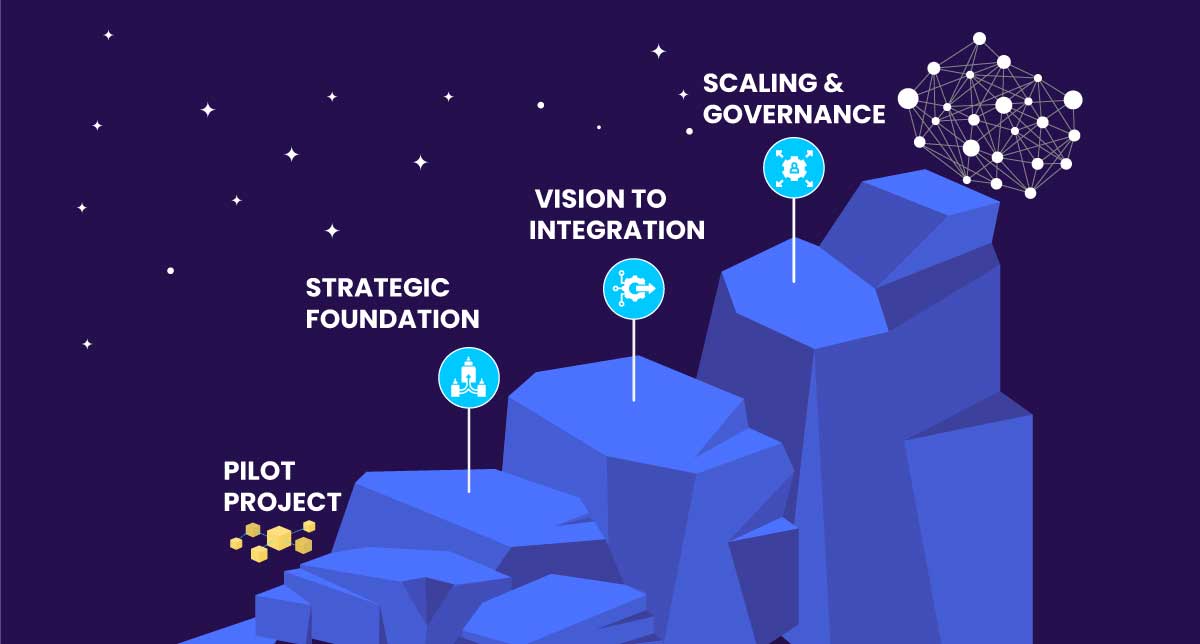Phase 2 - From Vision to Integration
With a solid strategic foundation in place, the focus shifts to integrating AI into the fabric of your business. This is the implementation phase, where the abstract becomes concrete.
- Build an AI-Ready Cloud Foundation - The cloud is the backbone of modern AI. It provides the flexibility and scalability required to handle large-scale data and complex models. This means consolidating data from disparate business applications (ERP, CRM, HRIS) into a unified data platform. Rather than building everything from scratch, it's smarter to leverage a cloud provider's managed AI and machine learning services, which simplify the entire lifecycle from data preparation to deployment.
- Integrate AI into Core Business Operations - AI should be woven directly into the applications that power your business.
- For ERP - Use AI to predict equipment failures, automate invoice processing with computer vision, or create highly accurate demand forecasts to optimize your supply chain.
- For Cloud Infrastructure - Leverage AI to analyze usage patterns for cost optimization and to proactively detect security threats in real-time.
- For HR - Enhance the employee experience with personalized career development recommendations and use predictive analytics to improve retention.
Phase 3 - Scaling and Governance
Once initial pilots prove successful, the challenge shifts to scaling these solutions across the entire enterprise while maintaining control and ethical standards.
- The MLOps Imperative - To scale, you must apply engineering discipline to machine learning. MLOps (Machine Learning Operations) is the practice of automating the entire model lifecycle—from training and testing to deployment and monitoring. It's the vital discipline that prevents AI projects from failing at scale by ensuring models are continuously monitored for performance degradation and are updated automatically.
- Build a Collaborative AI Culture - Technology is only half the battle; the other half is people. Active sponsorship from the C-suite is vital to overcome organizational inertia. Empower your teams by providing them with low-code or no-code tools to experiment with AI themselves. A culture of AI literacy, where employees understand the technology and its potential, is crucial for successful adoption and implementation.
- Prioritize Ethical AI and Governance - Responsible AI is non-negotiable. From day one, you must establish a framework for governance. This includes regularly auditing models for unintended biases, especially in sensitive applications like recruiting. It also means ensuring that the decisions made by AI models can be explained and understood by business users and regulators, building trust and ensuring compliance.
The Path to Enterprise AI Maturity
Implementing AI is a journey of continuous improvement. By following a strategic, phased approach—from aligning initiatives with business goals and leveraging cloud infrastructure to empowering your people— enterprises can move beyond pilot projects and fully embrace AI. The ultimate goal is to create a living, breathing AI capability that not only drives immediate innovation and efficiency but also secures a durable competitive advantage for years to come.




Leave a Comment